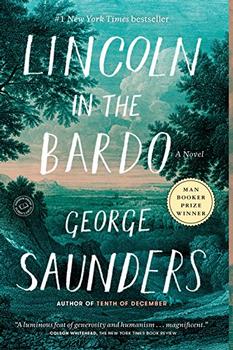Summary | Excerpt | Reviews | Beyond the Book | Read-Alikes | Genres & Themes | Author Bio

This article relates to Lincoln in the Bardo
The word bardo comes from the Tibetan Buddhist tradition and means "in-between." It refers to a transitional state when one's awareness of the physical world is suspended. According to Spiritualtravel.org the concept is an "umbrella term which includes the transitional states of birth, death, dream, transmigration or afterlife, meditation, and spiritual luminosity...for the dying individual, the bardo is the period of the afterlife that lies in between two different incarnations." Most of the characters in Lincoln in the Bardo are in this latter state throughout the novel, stuck between life and whatever awaits them beyond.
Broadly speaking, Buddhist philosophy states that while a person's physical body may die, one's essence does not, and that one is reborn. Whether the new life is better or worse than the earlier one depends on the person's actions during the current cycle.
Throughout the process of death and rebirth the individual is thought to pass through four separate bardos. The first is the bardo of death, which follows a dissolution of the physical body in a prescribed progression that aligns with the four elements:
It's believed that for most, the bardo of death passes quickly and only those who have practiced spiritual disciplines like meditation are aware of it.
This is followed by the second, the first bardo of the afterlife. During this stage, the being in transition has the opportunity to meet and learn from other, enlightened beings such as a guru or a deity. It is thought that these powerful beings manifest with bright light and loud noise, and those who are unprepared—who have not practiced meditation—flee and cling to the familiar, thereby landing in predictable patterns, leading them to a less optimal rebirth. Those who can embrace these guides, however, may move toward enlightenment themselves.
 If one is unable to join the enlightened beings, one moves on to the "bardo of becoming." Spiritualtravel.org claims that the individual passes through a great variety of intense emotional states in this bardo, bouncing "from thought to thought as a torrent of thoughts and feelings come like a waterfall." Those who have prepared may maintain some detachment and are able to avoid the disorientation many experience here. The greatest problem at this stage is negative emotions like fear that keep the being in a dream-like state and prevent them from moving in a beneficial direction toward rebirth. It is thought that those in this bardo are very sensitive to the thoughts of those they knew in life, and consequently chants, prayers, reading sacred texts and other rituals may guide those in this confused state. The average person is said to spend 45 days in the second bardo, although those with strong emotions or those who are responsible for evil acts may get pulled into the final bardo precipitously.
If one is unable to join the enlightened beings, one moves on to the "bardo of becoming." Spiritualtravel.org claims that the individual passes through a great variety of intense emotional states in this bardo, bouncing "from thought to thought as a torrent of thoughts and feelings come like a waterfall." Those who have prepared may maintain some detachment and are able to avoid the disorientation many experience here. The greatest problem at this stage is negative emotions like fear that keep the being in a dream-like state and prevent them from moving in a beneficial direction toward rebirth. It is thought that those in this bardo are very sensitive to the thoughts of those they knew in life, and consequently chants, prayers, reading sacred texts and other rituals may guide those in this confused state. The average person is said to spend 45 days in the second bardo, although those with strong emotions or those who are responsible for evil acts may get pulled into the final bardo precipitously.
The last bardo of the afterlife is "incarnation," where the "soul is pulled into another body to start a new life." Individuals are believed to have some control here and proper spiritual preparation can help guide them into choosing a good incarnation into which they will be born. There are several worlds one can enter. Tibetan tradition believes the material world is superior to even heaven as it affords more chance for spiritual growth.
Picture of peaceful and wrathful deities from the Bardo from Rubin Museum of Art
Filed under Places, Cultures & Identities
![]() This "beyond the book article" relates to Lincoln in the Bardo. It originally ran in February 2017 and has been updated for the
February 2018 paperback edition.
Go to magazine.
This "beyond the book article" relates to Lincoln in the Bardo. It originally ran in February 2017 and has been updated for the
February 2018 paperback edition.
Go to magazine.
Your guide toexceptional books
BookBrowse seeks out and recommends the best in contemporary fiction and nonfiction—books that not only engage and entertain but also deepen our understanding of ourselves and the world around us.